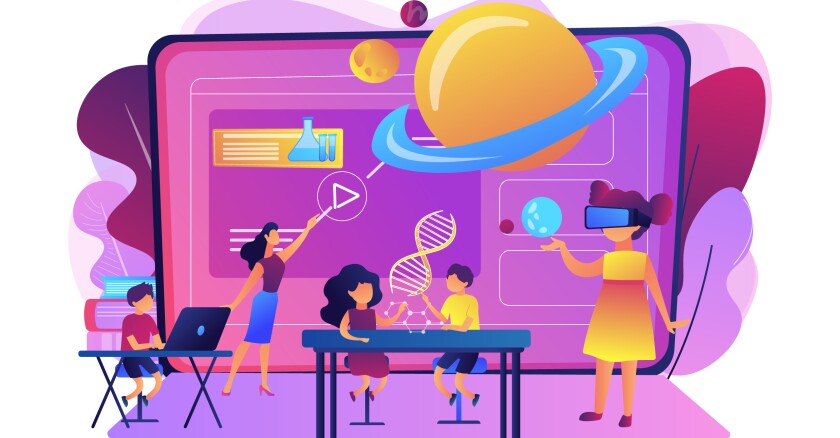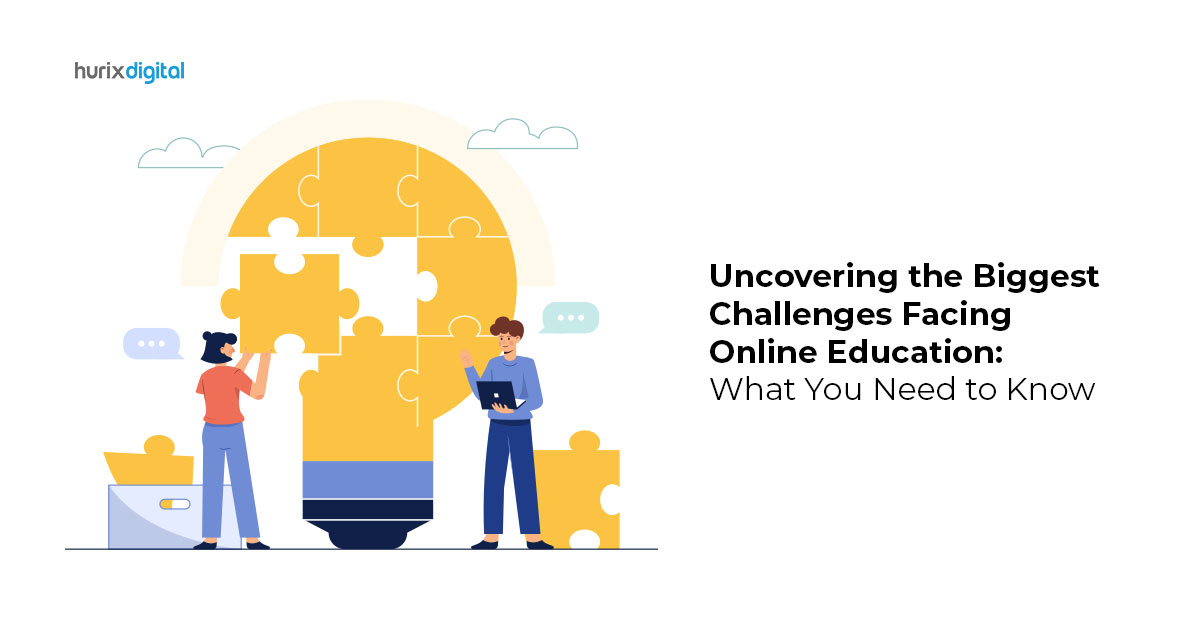Educational technology faces challenges including inadequate digital infrastructure and resistance to change. Budget constraints and teacher training deficiencies also hinder its implementation.
In today’s rapidly evolving digital world, schools and institutions strive to integrate technology in classrooms to enhance learning experiences. Nevertheless, they encounter several obstacles that can impede the process. Insufficient access to high-quality digital resources and tools often strikes schools in underprivileged areas the hardest.
Limited budgets make it difficult for educational institutions to invest in modern technological solutions. Another significant barrier is the existing resistance among educators and administrators, who may be skeptical about the effectiveness of new tools or methods. Additionally, many teachers require comprehensive training to effectively employ these technologies in their teaching, further stressing tight educational budgets. Addressing these issues is critical to fully realizing the benefits of educational technology for students across diverse learning environments.

Credit: www.hurix.com
The Gap Between Edtech Potential And Reality
Educational Technology, or EdTech, holds promise for revolutionizing learning. It can make lessons fun and in-depth. Yet, sometimes what we hope for doesn’t happen. This is the problem we face between the EdTech potential and actual outcomes. Here, let’s dive into key issues.
Discrepancy In Resource Allocation
Schools and districts have unequal resources. EdTech tools need money. Not all places have it.
- Some schools buy the latest gadgets.
- Others can barely afford basics.
- Teacher training also costs money.
Rich and poor schools see a big gap in EdTech quality.
Accessibility Barriers For Students
All students must get to use EdTech. That’s not always true. Look at these big problems:
- Not every student has home internet.
- Disabilities can make using tech hard.
- Tools must be easy for all to use.
EdTech must solve these to help every student.
Budgetary Constraints In School Systems
Every school wants to give students the best tech for learning. Money is tight, and tech can be costly. School systems face tough choices when trying to fit new tech into old budgets. Let’s look at the struggles schools have with paying for tech.
Challenges In Funding Tech Initiatives
Schools aim to prepare kids for a digital future. To do this, they need the latest educational technology. But finding the cash isn’t easy. Here are some hurdles they face:
- High costs of new devices: Tech like tablets and smartboards can be pricey.
- Updating old tech: It’s not just about buying new stuff. Schools must keep old tech running.
- Training teachers: Good tech is useless if teachers can’t use it. Training costs money too.
- Repairs and maintenance: Tech breaks and needs fixing. This adds to the expense.
Cost Versus Benefit In Education Budgets
Schools must think about the worth of each tech purchase. They ask themselves:
- Will this tool help students learn better?
- How long will this tech last in our classrooms?
- Is the cost reasonable for our limited funds?
They must balance these questions with the need to stay within their budget. Here’s a look at this balance:
| Item | Cost | Benefit |
|---|---|---|
| Laptops | High | Essential for modern learning |
| Educational Software | Medium | Improves engagement and understanding |
| Teacher Training | Varies | Ensures effective use of tech |
Smart budgeting is essential. Schools prioritize tech that offers the most learning bang for their buck. Tough choices, but ones that guide students into the future.
Maintaining Student Engagement
The challenge of maintaining student engagement is critical in the world of educational technology. As we navigate this digital era, educators and tech developers alike strive to create an effective learning experience. The balance between harnessing the potential of technology and keeping students focused is a fine one. Two major hurdles stand in the way: digital distractions and privacy concerns.
Digital Distractions In Learning Environments
With the shift to digital classrooms, a new kind of distraction emerged. Digital platforms offer an array of temptations that can lead students astray. Here are some key points:
- Social media lures students during learning.
- Instant messaging breaks concentration.
- Multiple tabs and applications can overwhelm and distract.
- Notifications interrupt the flow of study.
Solutions include setting clear rules and using technology designed to minimize distractions, like apps that block social media during class.
Monitoring Tools And Privacy Concerns
Educational institutions often employ monitoring tools to track student progress. Yet, these tools raise privacy concerns:
| Monitoring Tool | Privacy Concern |
|---|---|
| Software tracking | Data security |
| Camera surveillance | Personal space intrusion |
| Browser history checks | Internet usage privacy |
| Email monitoring | Communication privacy |
Tech developers and educators must collaborate to ensure these tools respect student privacy while providing the necessary oversight.

Credit: collegiseducation.com
Professional Development For Teachers
Professional Development for Teachers stands as a pillar in advancing educational technology. Educators must continuously learn and adapt. A successful integration of technology relies on their expertise. Teachers’ willingness and ability to utilize technology shape the future of learning. As we delve into this realm, two central conflicts emerge: training educators for technology integration and their resistance to and adaptation of new tools.
Training Educators For Technology Integration
Bringing technology into the classroom requires more than just new devices. Teachers need the right training to merge these tools with their teaching methods. Schools often overlook ongoing professional development. Yet, regular and structured training is crucial. The goal is to enhance teachers’ tech skills and teaching strategies.
- Interactive Workshops: Hands-on sessions bring theory to life.
- Online Courses: Convenient self-paced learning broadens knowledge.
- Peer Coaching: Shared experiences foster community learning.
| Training Component | Expected Outcome |
|---|---|
| Technology in Lesson Planning | Effective use of tech tools in curricula |
| Student Engagement Techniques | Interactive and immersive learning experiences |
| Assessment Through Technology | Instant feedback and streamlined grading |
Resistance And Adaptation To New Tools
Embracing new technology is not always a smooth journey. Educators face barriers to adopting new tools. Each teacher’s response to tech changes is unique. Resistance may come from a lack of confidence or fear of obsolescence. Understanding individual concerns is vital.
To foster positive attitudes towards technology, schools should:
- Provide Accessible Support: Offer immediate help for troubleshooting.
- Encourage Small Steps: Promote gradual tech integration in teaching.
- Highlight Success Stories: Share achievements to inspire others.
Evaluation And Adaptation Of Educational Technology
Evaluation and Adaptation of Educational Technology are crucial in today’s fast-paced learning environments. Educators and institutions must assess how effectively technology meets learning goals. They need to adapt rapidly to new educational needs. Identifying the right tools and practices can transform learning experiences.
Metrics For Measuring Edtech Effectiveness
Measuring the impact of EdTech is not always straightforward. Key performance indicators (KPIs) can help. Look at student engagement and achievement data to judge effectiveness. Usage statistics can reveal a lot about how well a tool fits into the educational workflow.
Essential KPIs include:- User Engagement: Time spent and activity levels within the technology.
- Learning Outcomes: Changes in student grades and test scores.
- User Feedback: Student and teacher surveys can provide insight into usability.
- Technology Integration: How seamlessly the technology integrates with existing systems.
Iterative Improvements And Edtech Lifecycle
EdTech solutions evolve over time. Continuous improvements based on feedback are essential. The lifecycle of an EdTech tool includes launch, usage, evaluation, and enhancement phases. It is a cycle that repeats to ensure relevancy and efficiency.
| Phase | Description | Key Action |
|---|---|---|
| Launch | Introduction of technology to users. | Initial training and support. |
| Usage | Integration into daily learning activities. | Regular monitoring and support. |
| Evaluation | Assessment of technology impact and effectiveness. | Gathering data and feedback. |
| Enhancement | Adjustments and updates based on evaluations. | Implement improvements. |
Utilizing an iterative process ensures EdTech stays current. Adoption rates improve where technology meets actual classroom needs. The ever-changing educational landscape requires tools that adapt accordingly.

Credit: www.govtech.com
Ethical And Privacy Implications
Ethical and privacy implications raise major concerns in the realm of educational technology. Innovations designed to enhance learning could compromise student data. Balancing technology’s benefits with ethical responsibilities is crucial. Schools and educators must navigate these complexities vigilantly.
Data Security In The Classroom
Classrooms are increasingly digital. With this shift comes the risk of data breaches. Personal information disclosed within educational platforms could fall into wrong hands. Schools must implement robust data security measures to protect students. This includes:
- Encrypted communication: Ensuring data sent and received is secure.
- Access controls: Restricting data access to authorized personnel.
- Regular audits: Checking systems for potential vulnerabilities.
Bold steps taken to safeguard data reflect a commitment to ethical educational practice.
Use Of Ai And Algorithmic Bias Concerns
Artificial intelligence is reshaping education. AI can personalize learning experiences. Yet, it comes with its own set of challenges:
| AI Use Case | Concern |
|---|---|
| Adaptive learning platforms | Potential bias in algorithms can lead to unfair advantages or discrimination. |
| Automated grading systems | They may misinterpret student responses due to a lack of context. |
To mitigate such concerns, educators and technologists must work together. They should ensure algorithms are transparent and inclusive. It’s essential to keep algorithms up-to-date to avoid perpetuating biases. Proactive measures promote fairness and ethical use of AI in education.
Frequently Asked Questions On What Are The Problems Confronting Educational Technology
What Challenges Does Edtech Face Today?
Educational technology faces multiple challenges such as technological access disparities, high costs of implementation, and a lack of digital literacy amongst educators and students. These barriers prevent uniform adoption and effective use.
How Does Funding Affect Educational Technology?
Insufficient funding is a critical problem for educational technology. It constrains schools’ ability to purchase updated equipment, subscribe to learning platforms, and provide adequate training for teachers, thus limiting educational advancements.
What Is The Digital Divide In Education?
The digital divide refers to the gap between those who have easy access to the internet and technology, and those who do not. This divide significantly affects students’ ability to engage with digital educational tools and resources.
Can Technology Hinder Learning?
While technology has the potential to enhance learning, inappropriate or overuse can lead to distractions and reduced face-to-face interactions. This can hinder the development of communication skills and critical thinking.
Conclusion
Navigating the challenges in educational technology is essential for progress. From integration issues to cost constraints, educators must find solutions. Engaging learners effectively requires overcoming such hurdles. As we address these problems, we’ll unlock the full potential of edtech for future generations.
Let’s embrace the journey together.












































Leave a Reply